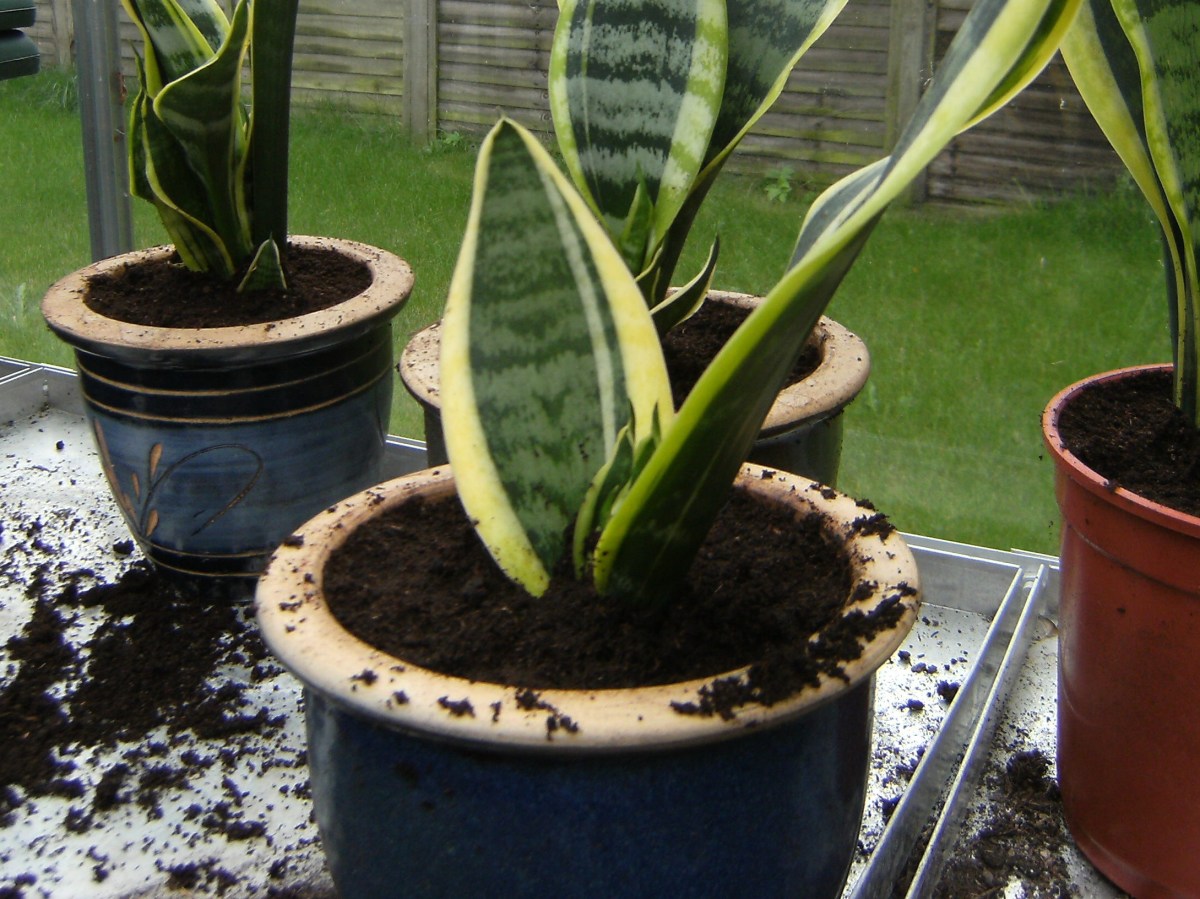A Comprehensive Guide to the Mother-In-Law’s Tongue Plant
The mother-in-law’s tongue plant, also known as the snake plant or Sansevieria, is an extremely popular and versatile houseplant. With its distinctive upright leaves and minimal care requirements, it’s easy to see why this plant has been a favorite for decades.
In this comprehensive guide, we’ll cover everything you need to know about growing and caring for the mother-in-law’s tongue plant, including its history, different varieties, ideal growing conditions, common pests and diseases, and tips for keeping it looking its best. Let’s get started!
A Brief History of the Mother-In-Law’s Tongue
The mother-in-law’s tongue plant is native to tropical West Africa It gets its unusual common name from the sharpness of its leaves, which are said to be as pointed as a mother-in-law’s tongue!
This hardy plant has been grown as a houseplant since the Victorian era Back then it was especially popular in parlors and hallways of well-to-do homes,
These days, the mother-in-law’s tongue remains one of the most popular houseplants thanks to its striking appearance and reputation as one of the easiest indoor plants to grow successfully.
Why Is It Called the Snake Plant?
The mother-in-law’s tongue is closely related to the snake plant and the two names are often used interchangeably. However, the snake plant is usually used to refer to the green-leaved Sansevieria trifasciata variety, while mother-in-law’s tongue is a more general term that encompasses all 70+ Sansevieria species and cultivars.
Different Varieties of Mother-In-Law’s Tongue Plants
One of the great things about the mother-in-law’s tongue plant is the diversity of available varieties:
-
Sansevieria trifasciata: This is the classic mother-in-law’s tongue variety. It has tall, stiff leaves with sharp tips and light gray-green coloring.
-
Sansevieria cylindrica: Also known as the African spear plant, this variety has round, tubular leaves.
-
Sansevieria laurentii: Known for its gorgeous yellow-green striping on the leaves.
-
Sansevieria parva: A dwarf variety, only reaching about 6 inches tall. Perfect for tabletops and small spaces.
-
Sansevieria masoniana: Distinguished by its extremely wide, deep green leaves.
-
Sansevieria patens: Grows in a rosette shape with leaves angled outwards.
-
Sansevieria trifasciata ‘Hahnii’: A very short variety, growing slowly up to about 8 inches high.
There are many more wonderful Sansevieria varieties out there too! When selecting a plant, consider factors like size, leaf color/patterns, and growth habit.
Ideal Growing Conditions for Mother-In-Law’s Tongue
An advantage of growing mother-in-law’s tongue indoors is that they aren’t too fussy about environmental conditions. Here are their basic needs:
-
Light: Bright to moderate indirect light is best. Although they tolerate low light, growth will be slower and leaves may become sparse.
-
Temperature: Average room temperatures between 65-80°F are ideal. Avoid cold drafts.
-
Water: Allow the top inch of soil to dry out between waterings. Water less frequently in winter.
-
Soil: A well-draining potting mix works best. Soil should dry out within a week or two after watering.
-
Fertilizer: Fertilize monthly in spring and summer using a balanced houseplant food diluted to half-strength.
-
Pot size: Size up to a slightly larger pot if the roots fill the current container. Avoid overpotting.
With the right conditions, your mother-in-law’s tongue will grow steadily and last for years as a low maintenance houseplant!
Troubleshooting Common Problems
Mother-in-law’s tongue plants are quite hardy, but they can still fall victim to a few issues:
-
Leaf tips turning brown: This is usually caused by dry air or inconsistent watering. Try increasing humidity and ensuring the plant isn’t too dry or wet.
-
Yellow or pale leaves: Indicates too little light. Move the plant closer to a window or sunlight source.
-
Leaf cuttings not rooting: Use a rooting hormone to encourage new roots and make sure the cut end is calloused before planting.
-
Slow growth: This can be fixed by moving the plant to a brighter location, watering more consistently, or repotting if roots are crowded.
-
Leaf spots: Overwatering can lead to bacterial or fungal leaf spot diseases. Allow soil to dry out between waterings.
With proper care, you can keep your mother-in-law’s tongue healthy and prevent most issues from developing in the first place.
Displaying Mother-In-Law’s Tongue Plants in the Home
One of the best qualities of the mother-in-law’s tongue plant is its striking architectural shape. Those upright, spear-shaped leaves look great displayed in a variety of ways:
-
Group several plants together in the corner of a room to create a bold visual statement.
-
Flank an entryway or doorway with matching plants on either side.
-
Place a plant on a pedestal, plant stand, or table to exhibit it as a floor plant.
-
Arrange in front of a bright window so the leaves glow in the sunlight.
-
Add visual interest by pairing with trailing plants like pothos or philodendron.
-
Use as a minimalist yet impactful focal point atop a console table, mantel, or kitchen island.
-
Plant in decorative ceramic or metallic containers to complement the modern leaf shapes.
Don’t be afraid to get creative with styling this adaptable plant! The upright growth habit works with any interior design aesthetic.
Caring for Mother-In-Law’s Tongue as an Air Purifying Plant
One of the mother-in-law’s tongue’s claims to fame is that it is an excellent air purifying plant. Studies by NASA have shown it can help remove harmful pollutants like benzene, formaldehyde, trichloroethylene, and xylene from indoor air.
To maximize its air cleaning abilities:
-
Place in rooms where you spend a lot of time, like the bedroom or family room.
-
Make sure the plant is actively growing by providing adequate light and avoiding overwatering.
-
Put in spaces prone to pollutants from smoking, cooking, or chemical cleaners.
-
Use several plants together to increase the air purifying impact.
-
Combine with other beneficial plants like peace lilies, aloe vera, and English ivy.
With great design appeal and air purifying qualities, the mother-in-law’s tongue really can improve indoor environments in more ways than one!
Propagating Mother-In-Law’s Tongue Plants
One of the easiest ways to get more mother-in-law’s tongue plants is through propagation. This resilient plant can be propagated using:
-
Leaf cuttings: Cut off a leaf near the base. Allow the cut end to callous over, then place in soil. New baby plants will eventually emerge from the original leaf.
-
Rhizome division: Carefully divide the underground rhizomes when repotting. Replant sections in small pots.
-
Plantlets: Some varieties produce tiny plantlets or “pups” from the base of the plant that can be removed and potted up.
-
Root cuttings: Take 3-4 inch sections of healthy roots and replant in soil to generate new plants.
With a high success rate, propagating mother-in-law’s tongue is a great way for both novice and experienced gardeners to multiply these fantastic plants!
Gift Giving with Mother-In-Law’s Tongue Plants
Thanks to their sleek look and hardy nature, mother-in-law’s tongue plants make excellent gifts! Here are some ideas if you’re looking for a unique present for the plant lover in your life:
-
Select a petite variety like dwarf mother-in-law’s tongue or cylindrical snake plant for desktop or tabletop use. Plant in a pretty ceramic pot for gift giving.
-
Create a customized planter by pairing a classic green mother-in-law’s tongue with decorative rocks, moss, driftwood, or other embellishments.
-
Combine with a watering can, plant mister, gardening gloves, or other complementary accessories for a complete plant care gift set.
-
Give bigger floor plants as housewarming gifts. They’re sure to make an impression in entryways or living spaces.
-
Present a planted basket showcasing several snake plant varieties together. This allows the recipient to admire different leaf shapes and colors.
-
Add a personalized plant stake or display the pot with a photo frame of you and the gift recipient to make the present extra meaningful.
Houseplants make heartfelt gifts, and the mother-in-law’s tongue is sure to delight any occasion

How To Propagate a Sanseveria “Snake Plant”
FAQ
What’s the difference between a mother-in-law tongue plant and a snake plant?
Can mother in law’s tongue plant go outside?
Is mother in laws tongue a poisonous plant?
Where do you put your mother-in-law’s tongue?
Is mother in laws tongue a flowering plant?
The mother in laws tongue (also known as Snake Plant, Saint George’s sword, mother-in-law’s tongue, and viper’s bowstring hemp) is a flowering species primarily grown for its slick sword-like long leaves. This is a slow-growing plant that anyone can grow because of its low and high sunlight tolerance and ease of watering.
What is a mother-in-law’s tongue?
The mother-in-law’s tongue, also called snake plant or Sansevieria Trifasciata, is a popular houseplant. This hardy indoor succulent plant can survive low light conditions, drought, and some neglect. The snake plant is identified by its long, upright sword-shaped green leaves with yellow margins.
Is mother-in-law’s tongue a good houseplant?
With its upright sword-like leaves and nearly indestructible nature it’s no wonder Mother-In-Law’s Tongue is such a popular houseplant. Also called snake plant or sansevieria, this sturdy succulent tolerates neglect like a pro yet thrives with minimal care. Read on to master growing and caring for this beginner-friendly plant.
Is a mother-in-law’s tongue a snake plant?
Mother-in-law’s tongues and snake plants are actually different varieties of Sansevieria trifasciata. If your plant has a yellow border to its leaves, it’s a mother-in-law’s tongue. If it has green leaves with lighter colored horizontal bands, then it’s a snake plant. What is a mother-in-law’s tongue?
What does a mother-in-law’s tongue plant look like?
The Mother-in-Law’s Tongue, also known as the Snake Plant, is a popular and hardy houseplant with stiff, sword-like leaves. It comes in different varieties, with green-banded or striped leaves that have a yellow or cream border.
Can mother-in-law’s tongue grow in a bedroom?
The advantage of growing this type of snake plant is that it helps to removes airborne chemicals such as benzene, formaldehyde, xylene, and nitrogen oxide. Because mother-in-law’s tongue can clean the air and grow in low light, it’s an ideal plant to keep in your bedroom.
